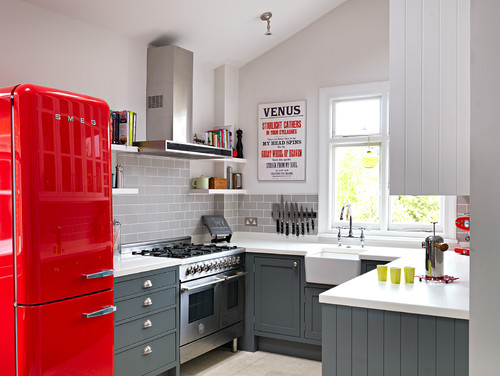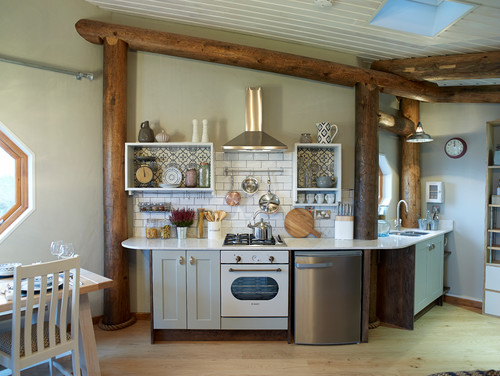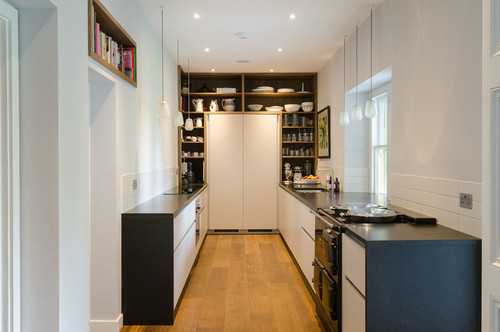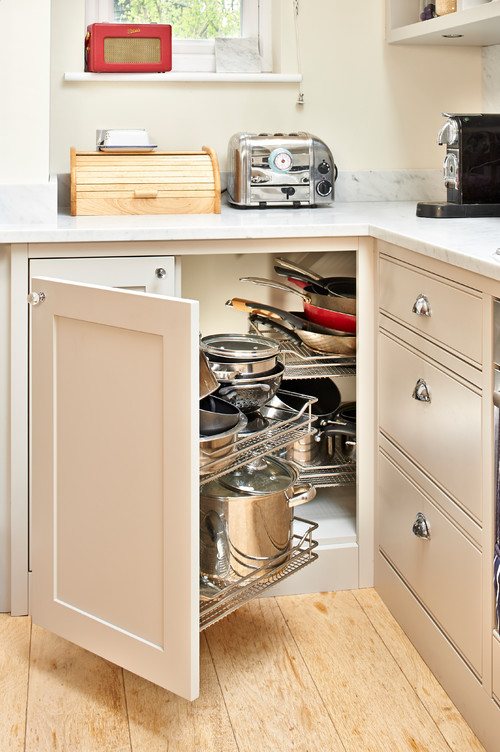Coldwell Banker at Inman Connect San Francisco 2017



Inman Connect San Francisco brings together more than 4,000 of the most important people in real estate including top-producing agents and brokers, CEOs of leading real estate franchises and tech entrepreneurs to embrace and leverage the change that surrounds real estate.
Coldwell Banker showed up big this year. From the stage to the lobby Gen Blue was seen and heard – reminding the industry why it is real estate’s most iconic brand.
Below are some highlights from the week.
The President and CEO of Coldwell Banker, Charlie Young, gave an inspiring keynote from mainstage about how the Empowered Agent is bringing positive disruption to real estate and is a force to be reckoned with.
Charlie also wrote a piece for Inman on how to identify, embrace and support these talented specialists as we look to the future.
A special group of empowered agents were highlighted on mainstage including Team Diva with Coldwell Banker Bain in Seattle. Pictured on-screen below is Kim V. Colaprete and Roy Powell.

Lindsay Listanski, Senior Manager Media Engagement for Coldwell Banker, ran a social media crash course on how to implement geographic marketing using Facebook, Instagram and YouTube.
The audience ate it up and so did Inman. Lindsay’s presentation was packed full of how-tos, best practices and helpful tips on how to take your social media marketing to the next level and wow your sellers. You can catch her full presentation here.
David Marine, Senior Vice President of Marketing, predicted the future of real estate marketing. Spoiler alert: the future is video. He covered everything from local television advertising to how to effectively use video to bolster your listings. He also addressed how real estate brands should think about using tools like Zillow and Trulia to their advantage.
Coldwell Banker rounded out the week with a visit to the Nest Headquarters in Palo Alto.
Agents and brokers heard from Nest CMO Doug Sweeny about the future of the connected home and received a preview of what Nest is doing to support real estate Smart Home specialists.
Come back to CB Exchange for a new suite of marketing assets next month!
The networking and fun continued at the invite-only Coldwell Banker cocktail party – Smart Cocktails and Smart Conversations.

Even if you weren’t there in person you can catch up on everything you missed right here:
- David Marine on Why You Should Consider Advertising on Local TV
- David Marine on Zillow and Trulia
- Sam DeBrod on Why Brokerages Still Matter
- Terri King on the Value of a Franchise Brokerage and Coaching Your Team
- Charlie Young on Mainstage: The Empowered Agent
- Lindsay Listanski on Geographic Marketing using Facebook, Instagram and YouTube
Coldwell Banker sales associates can also stay in the know with Gen Blue News. Now available on Amazon Alexa, just enable Gen Blue News on your Amazon Echo or Echo Dot and say “”Alexa, Open Gen Blue News” or download the podcast through iTunes.
And if you’re still having FOMO make sure to join us at Gen Blue and Inman Connect NYC!
Our Future is Now: The Coldwell Banker Brand Anthem


The power of the Coldwell Banker brand – in one customizable video (and downloadable eCards). View the brand anthem video and get your very own now.
From the CB Zap platform, award-winning CBx Listing Experience App, smart home initiative and record breaking ad campaigns, Coldwell Banker Real Estate has the resources that can help you lead your market and exceed your goals.
Watch above as we show exactly why Coldwell Banker is the real estate brand with real advantages. And the best part is you can customize this video and download an eCard for promotional use in your local market!
The Coldwell Banker network is filled with trailblazers, trendsetters and doers. By affiliating with the brand, your business demonstrates a power, reach and recognition of a global brand where we make a difference in the lives of others.
Source: Coldwell Banker Blue Matter Blig
How To Win A Bidding War Without Overspending


Winning a bidding war requires tactful strategy. What’s your next move?
Right now we are in a Seller’s Market here in Solano County. Oftentimes that means multiple offers over list price. It can be a frustrating and exhausting process. Read on for strategic tips!
It’s possible to win a bidding war without paying a cent more than you budgeted for.
-
Know what you can really afford
As far as emotional purchases go, buying a home ranks right up there with choosing a wedding dress — only the financial stakes are much higher. Unless you know ahead of time exactly how much house you can afford, you could easily be sucked into spending too much. Your lender or financial adviser can help you determine that number. Then it’s time to play ball.
“Submit your best and final offer early,” says Skyler Irvine, senior partner at Myriad Real Estate Group in Phoenix, AZ. “If $1,000 keeps you from pulling into the driveway of your dream home just because you wanted to play hardball, then you might regret this more than you can imagine.” But the flip side is also true. “If you get outbid because someone offered more than you were comfortable with spending, then you didn’t lose anything and made a smart financial decision.”
Here’s a real-life strategy from a client of Naples, FL, agent Gordon Campbell on how to submit the best offer in a “best and final” situation without going too high: “They simply added a clause stating that they would pay $1,000 more than the next ‘best and final’ capped at the original price as seen in the MLS.” The outcome? “They got the property for slightly more than the other bidder.”
-
Talk with the listing agent
You can put in an offer, but unless your agent makes the effort to speak with the listing agent, your offer, in a multiple offer scenario, will probably not stand out. Gary Hughes, a Virginia real estate agent, recently received 13 offers for a property he listed. “Twelve were just emailed, and the buyers’ agents did not speak to me,” he says. But one agent called and had the lender follow up. “The lender and the buyer’s agent were able to address a concern in a way that assured me it would get to settlement. It wasn’t the highest offer, but it was close. Those conversations made all the difference.”
-
Propose a shorter closing
It’s always beneficial to find the seller’s motivation for selling (if you can). Let’s say they just accepted a new job in another part of the country. This seller is probably highly motivated to sell quickly. “If you can close the deal in two or three weeks, you may win over the higher offer that comes with a six-week closing period,” says Eric Bowlin, a real estate investor.
But just how do you go about closing faster? Here’s one way: “Tighten up your inspection time frame so sellers know that they can get through to a closing date quicker,” says William Golightly, a Florida agent.
Buyers can also be preapproved, or even better, get a conditional approval, from their lender. Going through the mortgage process first allows you to close just as fast as all-cash buyers do. -
Rent the house back to the sellers
Some sellers aren’t interested in a short closing at all. In fact, the opposite could be true. Sellers who don’t have to sell quickly but who are just making a change, such as downsizing or upsizing, might want a long closing or some sort of flexible deal to give them time to find their new home. “Being able to rent back the property to the seller for a few months while they solidify their next purchase can go a long way into not needing to overbid on the property,” says Aaron Norris, a California real estate investor with The Norris Group.
-
Submit an as is offer
The fewer conditions you put on negotiating the house price, the more attractive you look to sellers. Consider offering to buy the house as-is. Miami Beach, FL, agent Jill Hertzberg says, “You can opt out of conducting inspections.” But since this is an extremely risky proposition, Hertzberg suggests instead of waiving the inspection altogether, decrease the inspection period to two days maximum. Lilia Biberman, a Boca Raton, FL, agent says to only waive the inspection “if you have a firm grasp of all the possible defects a property may possess and the costs associated with remedying those defects.” Also, if you’ll be paying in cash, you don’t need a financing contingency, which protects buyers who don’t secure financing in time.
Source: Trulia Blog
How to Keep a Small Kitchen Organized


Everyone LOVES a big kitchen. Lots of room to whip up your culinary delights! The truth is that anyone can adjust and create beautiful meals in a small kitchen. Its all in the organization!
It can be tricky keeping a compact cooking space tidy, but these ideas can help keep a small kitchen organized.
Contrary to what you might think, you don’t need acres of counter space or dozens of drawers and cupboards to have an organized kitchen that’s a joy to cook in. If anything, a smaller kitchen can encourage you to streamline your stuff and live more simply. Who wants cabinets chock-full of unloved pasta machines and dusty bread makers anyway? Check out these easy ways to restore order to your less-than-enormous kitchen.
1. Start with a utensil rack. Not only will it give you a place to hang slotted spoons and ladles for easy access while cooking, it will also free up precious drawer space.
Even in the tiniest kitchen, you can usually find somewhere to squeeze one in — under a cupboard or shelf or above the stove. Stainless steel models work in most styles of rooms and are easy to wipe down.
2. Get a knife holder. A knife block or magnetic rack is one of those simple items that really do make a difference in how functional your kitchen is. After all, rummaging around in a drawer for a piece of kitchen gear you use frequently is time-consuming and dispiriting.
A wall-mounted rack like this one keeps things orderly without swallowing too much space. Buy decent knives if you can afford it, as they should last a lifetime. One advantage of a magnetic rack is that you can slowly build up your collection of knives, buying one at a time, rather than having to invest in one large block complete with knives, which can be pricey. If you’re starting from scratch, a bread knife, paring knife and chef’s knife are essential.
3. Assign dedicated storage areas. Kitchen clutter can easily accrue, so it makes sense to assign different cupboards a specific purpose and stick to it. And dedicate a few minutes every couple of weeks to returning stray plastic lids or pot covers to their homes and sweeping out spilled spices and coffee grounds — it really will make a difference in how pleasurable (and easy) your kitchen is to use day to day.
4. Reduce your numbers. If your kitchen is really mini, or even if it isn’t, think about doing a good edit of your paraphernalia. Be honest: Do you really need more than a handful of plates, mugs or glasses if there are only one or two of you?
Having less stuff can be immensely freeing — and will significantly reduce the amount of time you spend washing up, which is a big bonus.
5. Gather and display. This cute kitchen demonstrates how you can be organized and chic at the same time. A charming crock to hold wooden spoons, a wall-mounted crate or two to provide a home for vintage-style scales and jugs, a small wall-mounted spice rack — they all add a pretty touch as well as having a practical function.
6. Be clever with your cabinets. Use every spare inch in a small kitchen by building recessed shelves where feasible. Here, they surround an integrated refrigerator. With this design solution, wall space that’s too skinny or awkwardly shaped for extra cabinets can still be used to hold frequently used items. In this kitchen, it also helps open up the room and leads the eye to an appealing feature.
The other clever feature in this kitchen is the cookbook niche above the door — another neat storage trick that doesn’t take up too much room. Ask a builder if one can be carved out from an existing wall.
7. Go minimal. Are you in the process of picking new cabinets for your compact kitchen? Consider this look. Ultra-plain, handleless cabinets in a nude hue are soothing to look at and give a sense of visual order. Pick a seamless backsplash such as this slab of marble, since tiles with grout can look busy.
8. Get in a tight corner. When space is tight, an ingenious trio of pullout corner drawers is a lifesaver, helping to solve the problem of lost space in those awkward-to-access base cabinets.
If you’re remodeling, think about how you’d use such drawers — for cutlery, towels, pans, dishes? Here, a slimmer top drawer is complemented by the two deeper ones, so all the bases are covered.
9. Put the pans away. Similarly a pullout pan rack can be a gift in a small kitchen, creating an organized home for frying pans and saucepans and keeping you from tearing your hair out as you hunt around in the backs of cupboards. Also try using racks for items such as steamers or large, unwieldy casserole dishes.
10. Organize inside. It may sound like a no-brainer, but often what makes a kitchen, big or small, organized is how we arrange the insides of our cupboards. Shelf and drawer dividers, hooks, racks and other storage devices are key to keeping order. Consider what works for you and go custom if you can. Are you a Mason jar and Tupperware kind of person? Do you prefer mugs on hooks, shelves or in drawers? Storage is often about personal preference. Here, the slim slots for chopping boards and placemats are a brilliant idea, as is the slim pullout spice rack.
Source: CB Blue Matter / Houzz
Home Safety: How to Protect Your Family at Every Stage of Life


Safety…ALWAYS a concern. Here are some really practical tips throughout a lifetime of staying safe. Good to know!
We all want to keep our families as safe as possible, but home safety requirements change as your family grows and evolves. From newborns to pets, a variety of different strategies can ensure your home is as safe and accommodating as possible for your family. Here are some simple tips to help keep your family safe through every stage of life.
Getting Your Home Ready for a New Baby
Babyproofing a home is largely about protecting them from their own curiosity. Once a baby learns to crawl, anything in reach is fair game to be grabbed, touched, or chewed on.
1. Install baby gates to keep certain rooms off-limits. This is especially important near stairs.
2. Fill unused electrical outlets with plastic plugs. Outlets are like magnets for babies.
3. Store breakable items out of reach.
4. Keep small items out of reach, as well. Small objects that could be put into mouths are a major choking hazard. A good rule of thumb is if it can fit in an empty toilet paper roll, it is small enough for a baby to choke on.
Home Safety for Toddlers and Elementary-Age Children
Toddler-proofing is a little different from babyproofing in that a toddler is usually more resourceful about getting into things they shouldn’t be. Toddlers will climb, open doors and drawers, and generally get themselves into trouble.
1. Move anything small or breakable up higher now that your child is walking and climbing. You’d be surprised at what they can reach.
2. If you have a pool, build a fence around it. You’ll want a barrier at least a few feet high to make it harder for your toddler to climb over.
3. Secure drawers and cabinets with childproof latches.
4. Place safety locks on windows and doors to prevent them from being opened.
5. If you don’t have a home security system, install one for added safety. Choosing a system with the right features, like motion sensors and security cameras, can help you know if your curious toddler runs out the door or it can help you keep tabs on things while the babysitter is over.
Safety During the Teenage Years
As your child grows into their teens, the focus moves further from physical safety and more towards online safety and general home security. Online safety is extremely important with teenagers in the house.
1. Set clear boundaries and expectations with your teen regarding potentially dangerous situations. These could involve simple subjects like safe driving or complex topics like drinking and drugs.
2. Keep alcohol, firearms, and any prescription or over-the-counter drugs locked up in a safe place.
3. Educate your teen about safe internet usage. This includes avoiding malware, being smart on social media, and using privacy settings.
Pet-Proofing Your Home
Pets make great additions to the family, but they come with their own safety needs. In many ways, pet-proofing is similar to babyproofing. Pet-proofing involves keeping harmful items out of their reach and making sure that they can’t escape the house or yard and run off.
1. Keep cleaning products, chemicals, and medications in high places or locked where pets can’t stumble upon them.
2. If your pet likes to chew on (or eat!) household items, make sure that you don’t leave anything lying around. It can be helpful to do a quick walkthrough of your home a couple times a day, such as when you leave and return from work.
3. If you have a home security system, make sure the motion sensors are capable of detecting and ignoring your pets.
4. If you have a fenced yard, check it for weaknesses or small gaps that a pet could squeeze through.
Getting Your Home Ready for Your Parents to Move In
As our parents get older, it’s not uncommon for them to move in with us. This can help ensure their safety and prevent the loneliness that often comes with old age. It can also present some unique challenges when it comes to home safety.
Depending on your parent’s age and their physical and mental well-being, you may need to make small home improvements for their convenience or physical safety. In general, you’ll want to try to minimize the potential for falls and make sure that help is always within reach.
1. Install grab bars in the bathrooms near the toilet and shower. These bars can help support a person as they move in and out of the shower or tub, both making this task easier and helping prevent falls. Make sure they can support the weight of the person who’ll be using them.
2. Walk through your home and check for objects that might make tripping hazards. Throw rugs, children’s toys, and pet toys can all be dangerous for people lacking the eyesight or reflexes to maneuver around them easily.
3. Set up a medical alert system. This is a wearable device that essentially functions as a panic button—if a person falls or has a medical emergency, they can push the button to get instant access to help.
4. Learn which foods are hazardous for senior health. As your parents age, their immune system weakens, making them more susceptible to food poisoning and health risks. Prepare meals at home that won’t threaten the health of your aging parents.
Your family grows and changes as time goes by, and so should your home safety plans. If you want to keep up with each of your family members, continually assess their needs. These tips should give you a great starting point towards building a safer home for your family.
Source: RisMedia

 Facebook
Facebook
 X
X
 Pinterest
Pinterest
 Copy Link
Copy Link





















